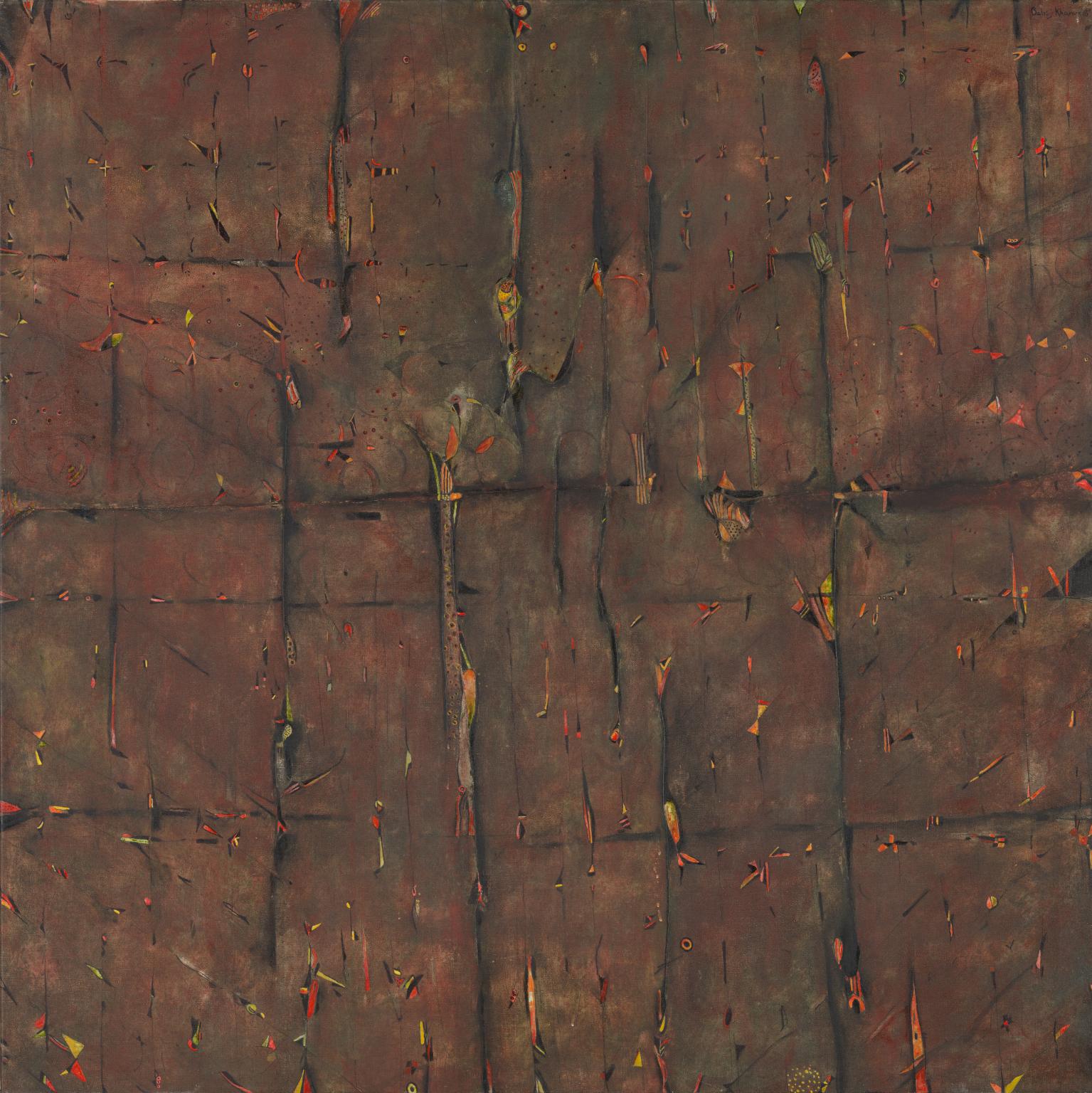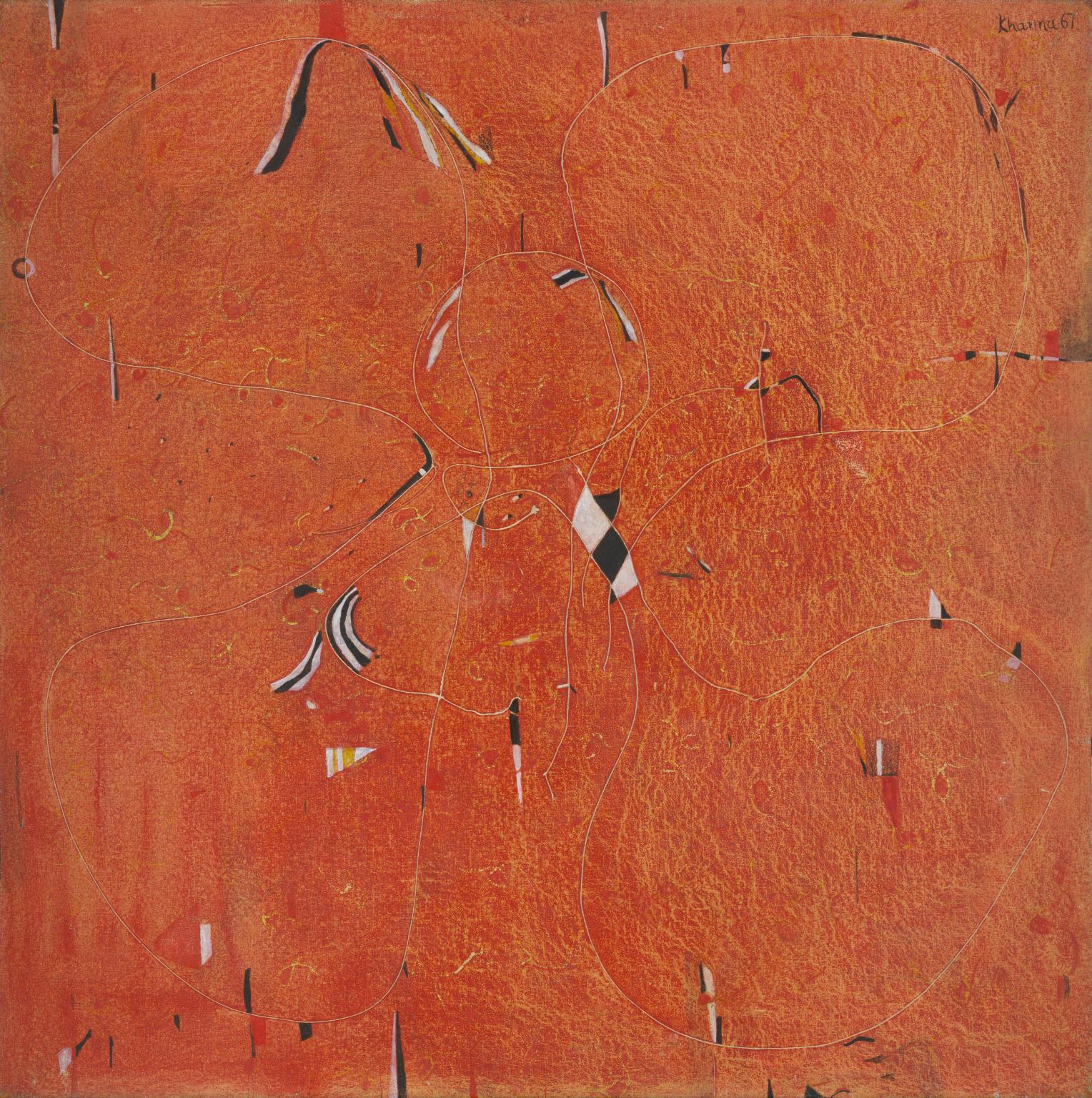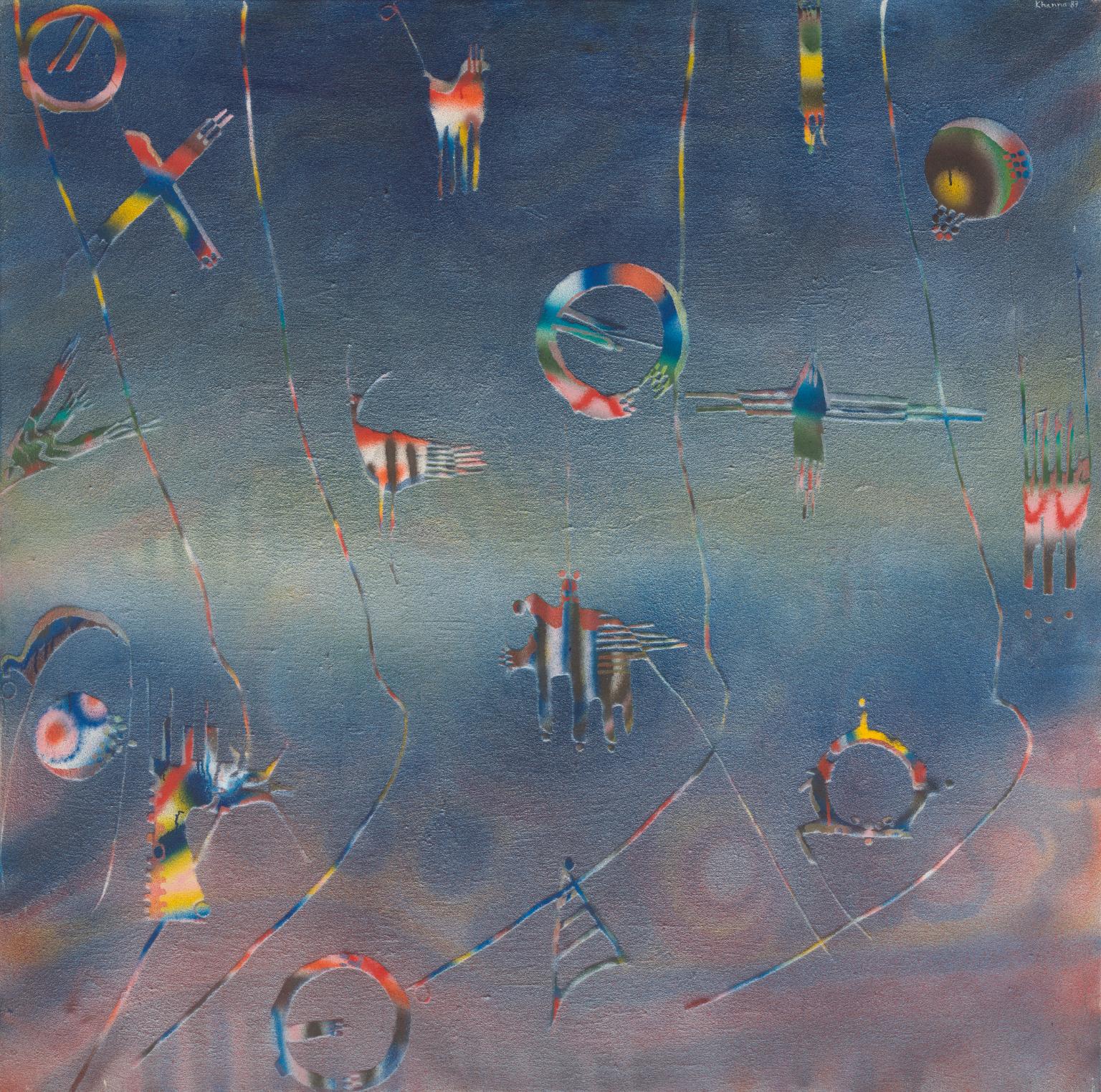14 rooms in Modern and Contemporary British Art
In these poetic, abstract paintings Balraj Khanna explores ideas of nature, community, imagination and the unconscious
Born in the Punjab region of India in 1939, Balraj Khanna was an artist, writer and curator. He moved to the UK in 1962 intending to further his studies in English literature, but instead discovered a passion for drawing and painting. Within months of his arrival in London, Khanna found a community of fellow artists, including the painters F.N. Souza (1924–2002) and Avinash Chandra (1931–1991). By 1964 he was a member of the Indian Painters Collective, a group that advocated for the representation of Indian artists in Britain.
In 1965, a lengthy period of recuperation from a road accident sparked a change in Khanna’s painting style. Recovering next to the Forêt St-Bernard in Metz, France, Khanna felt connected to nature for the first time since leaving India. He credited this time with instilling ‘a new force’ in his practice, inspiring his multi-layered abstract works. Incorporating organic and geometric forms, Khanna sought to express what he called ‘the theatre of the natural world’.
Khanna continued to experiment with new techniques and materials including string, sand and stencils to create vibrant surfaces that burst with life. His distinctive forms are ambiguous yet familiar. They suggest a range of images, from plants and animals to the toys and kites of his childhood.
Khanna had his first solo exhibition in 1965, and in the decades that followed he exhibited widely in the UK, France and United States. This display celebrates Tate’s recent acquisition of three major paintings and is presented in affectionate memory of the artist, who passed away in January 2024.
Art in this room

Sorry, no image available
Sorry, no image available
Sorry, no image available
Sorry, no image available



